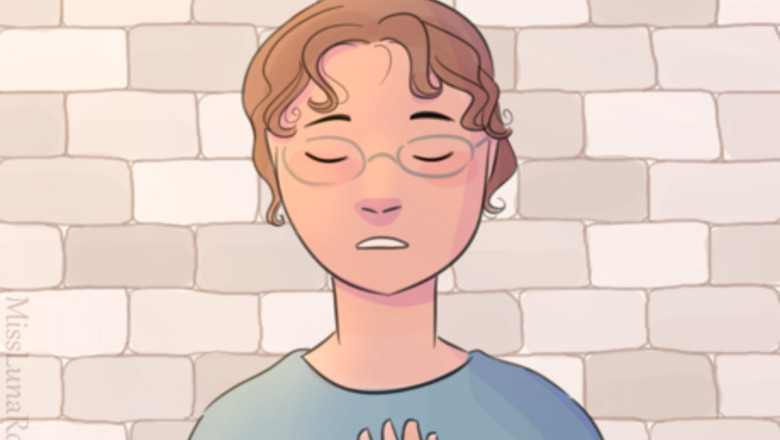
views
To help a teen or adult autistic friend, check out How to Handle an Autistic Friend's Meltdown.
Understanding the Issue
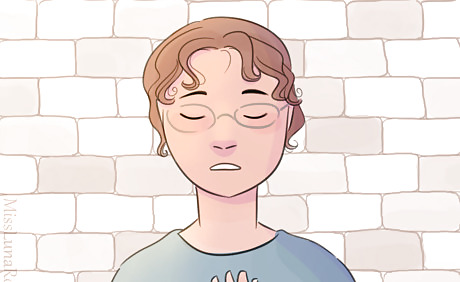
Recognize that the child is not acting out on purpose. Meltdowns are a reaction to severe stress, and they feel awful. They aren't something that the child does intentionally; they're something that happens to the child when they can no longer cope. The child can't stop it. You cannot reason with them or convince them to calm down. They are at the end of their rope and are too stressed to think logically. The child has very little self-control during a meltdown. If they behave badly, they are likely to regret it once they are clear-headed.

Don't beat yourself up. Meltdowns are pretty normal for autistic kids. Even wonderful caregivers can still have kids who melt down from time to time. This happens to plenty of people, and it likely isn't a reflection on you. It's not personal; it's just a sign of stress. As long as you weren't blatantly ignoring the child's feelings or provoking them, you can assume it's not your fault. And even if you contributed to it, try to learn from it without beating yourself up. These things happen. Sometimes kids just need to "cry it out." All you can do is help them and love them. Once it's over, they'll probably feel better. Even if you mishandled the situation, try not to blame yourself. Remember that mistakes are normal, and no kid gets perfect caregivers. Apologize to the child once they're calm, and try to do better in the future.
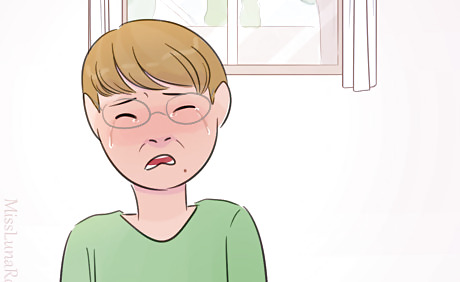
Recognize the difference between a meltdown and a tantrum. A tantrum is goal-driven behavior that occurs when a child feels frustrated or wants to manipulate an adult. A meltdown is a reaction to stress, and the child doesn't "want" anything except to stop feeling so awful. Here are some ways you can tell them apart: Goal: A tantrum has a clear goal (e.g. a cookie or a later bedtime). Meltdowns have no goals. Trigger: A tantrum has a clear external trigger. A meltdown is usually preceded by increased anxiety, and the trigger is just "the last straw." It's common for multiple factors to cause a meltdown. Self-control: Tantrums are willful behavior, and the child will take care not to injure themselves or break their things. Meltdowns involve a loss of control, and the child may injure themselves or break beloved objects without meaning to do so. Monitoring: During a tantrum, a child will watch your reaction to see if it's working. During a meltdown, the child will be too stressed to think much about you. (They may not even notice if you leave the room.) Duration: Tantrums are usually quick, and the child can return to normal activity immediately afterwards. Meltdowns take longer, and usually have to run their course before they fizzle out. Meltdown recovery may take minutes or hours.

Try reading what autistic people have to say about meltdowns. Many autistic teens and adults have written about their own meltdowns, how it feels, and how people can help them. Their insights can offer advice and perspective on helping the child. Don't assume that anyone who can type on a computer is "too high-functioning" to understand an autistic child. In fact, many of them had or still have high support needs. Sometimes, autistic kids with high needs grow up into capable adults.

Get help or step away if you can't handle the situation. If you are totally frazzled, you may not be ready to handle the meltdown calmly. If you cannot constructively handle a situation, then do what you can to avoid making it worse, and see if a clear-headed person can help you. Ask a nearby trusted adult to help you. Delegate work. For example, ask one person to clear a path to the door and another person to help escort the child while you call a helper. Call one of the child's loved ones or care workers. Contact a parent, close relative, therapist, specialist, or someone else for advice. Make a quick improvement on the situation (like giving the child a favorite toy and shooing bystanders from the room) and then take a 2-minute break to collect yourself. Leave the room if you think you are going to lose your temper.
Calming the Child

Act in a calm and reassuring manner. The child is at their wits' end, and if you get agitated or start yelling, then that will only further stress them. Instead, take some deep breaths and handle the situation as calmly and compassionately if you can. If they are still semi-verbal, you can try asking what's wrong. Trying to control the child through yelling, threats of punishment, or grabbing them is likely to backfire. You want to decrease stress, not increase it.
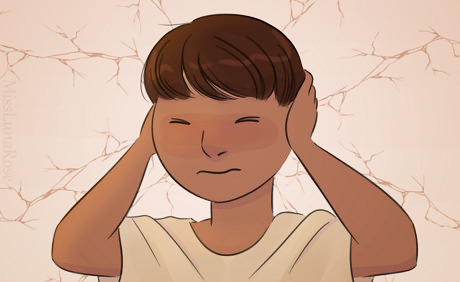
Reduce sensory input and stressors as much as possible. A meltdown is the result of too much stress, so anything that removes stress is likely to make the meltdown shorter and less dramatic. If any loved ones are nearby, you can have them help you do tasks like pausing a movie or handling a shopping cart while you take the child out. Shoo away bystanders. Minimize talking. The child may be too stressed to process many words. Retract any demands placed on the child. Fix any upsetting sensory input (such as loud music or bright lights). Help them remove any uncomfortable clothing if they're trying to get it off.
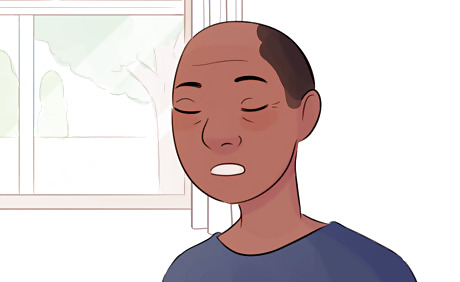
Focus on harm reduction if they start self-injuring. Sometimes, autistic kids get so stressed that they start hurting themselves in order to drown out everything else. Figure out what sense they're targeting, and see if you can give them sensory stimulation in a safer way. After the meltdown, you can talk to the child about whether you helped and what you could do next time. Reduce the harm: Put a thick cushion between them and whatever they're hitting. Move sharp or dangerous objects away from the child. Provide a good alternative. For example, a child who is hitting might be willing to hit the couch or push the wall. Target the appropriate sense. A biting or hitting child needs deep pressure, such as a tight squeeze. A screaming child needs auditory stimulation, so blast loud music, and try moving around the speakers. A child who throws things needs vestibular input, so get them to spin, jump, or swing. Continue until the child stops you.

Help the child take a break. Remove the child from the area if possible, and take them somewhere quiet such as an unoccupied room or a peaceful place outdoors. If they have a calming down corner, let them use it. Do your best to make the area quiet and peaceful for them. A quiet place is ideal because it can help reduce sensory overload and let the child recover without interruptions. This can be difficult if you are stuck somewhere, such as on an airplane. If this is the case, you may be able to use items like hoodies, headphones, and a tablet to get them "in their own world" for a while.

Offer something calming as they regain awareness of their surroundings. Think about whatever tends to help the child calm down. Offer it, without forcing it if the child declines. (They may not want it if they're too overwhelmed.) Do your best to make coping strategies available, without pushing. A favorite toy A hand to hold Their favorite music A tight hug (but only if they agree to it first)

Ask them if they want you to stay. Sometimes, the child may want a comforting presence to snuggle, hold hands, or listen to their woes. Other times, they might prefer to calm down alone. Ask "Would you like me to stay with you?" and act according to their answer. If you leave them, try giving them something to do (like a book, tablet, or simple activity like a coloring book). This can help them calm down and focus on something comforting. If they need constant supervision, try sitting nearby. You can use this time to check your email or read a good book.

Give them time to recover. A meltdown is an exhausting ordeal. Depending on the severity of the meltdown, recovery may take anytime from 30 minutes to the rest of the day. Allow them to rest on their own schedule.
Making Plans for Next Time

Talk with the child after the meltdown. Ask what made them so upset, and listen carefully to their side of the story. Ask if your strategies helped them and have a dialogue about what would be helpful next time something similar happens. If they express guilt, be reassuring and forgiving. Reaffirm your love and care for them. If talking about it is too stressful for the child, let it go. Even if the child can't speak or use AAC yet, they might be able to smile, frown, babble, or use other nonverbal signals to show agreement or disagreement. Gently correct them if they were unkind during the meltdown. For example, you might say "It's okay to be mad at Dad, but it's not okay to call him names." Talk about alternative ways to express themselves. While some behavior (like crying or screaming) may be uncontrollable, the child may be able to refrain from certain actions in the future.

Try to recognize meltdown triggers. Knowing the trigger(s) of a meltdown may help you figure out how to approach the problem, and how to avoid a few future meltdowns too. Stressors that can lead to a meltdown include: Sensory overload Frustration, especially if the child struggles to communicate Being ignored, interrupted, or unheard Excessive demands Changes in routine, especially if they are unexpected Information overload Chaotic or unpredictable situations Hunger Exhaustion Anxiety

Plan future meltdown reduction strategies to use day-to-day. While sometimes meltdowns can't be prevented, you may be able to reduce the frequency and severity by implementing stress-reduction tactics. Keep an eye on the child and their stress level. Understanding the child's unique body language can help. Find work-arounds or accommodations to help with situations that stress out the child. Or, if it's not worth the stress, stop trying to make it happen. Try creating a sensory kit with items like earplugs, headphones, sunglasses, comfort items, and/or stim toys. Talk to your child about stress management. Praise them when they use a stress management strategy.

Work on long-term stress reduction plans. A low-stress lifestyle can help reduce the stress buildups that lead to meltdowns. While they still may happen sometimes, lifestyle changes may help. Medical needs: Are there any co-occurring medical issues that need addressing? Are they sleeping well? Communication needs: Is the child able to express themselves in words (speech or AAC)? Do people listen? Can they vent or be imperfect without worrying about criticism? Downtime: How much of their day is scheduled? Do they have enough free time? (Autistic kids may need more quiet time to unwind.) Recharging: Does the child spend enough time with their special interests and hobbies? Can they access their comfort items? Do they get to spend one-on-one time with loving, supportive people doing things they enjoy? Security: Are there familiar routines? If the child talks about a problem, like sensory pain or bullying, do adults believe them and try to help? Compassion: Do people spend more time building them up or putting them down? Are they shown forgiveness for their mistake? Are adults modeling the skills the child needs? Stressors: What stresses out the child the most, and can it be avoided or managed better? Can some things be cut out or cut back on? Self-esteem: Do they forgive themselves for their mistakes? Are they dealing with shame or self-blame? Is their opinion on autism positive, neutral, or negative?

Get expert help if the child's meltdowns are becoming noticeably more frequent or dramatic. Sometimes this is a sign that something is wrong. Mistreatment, a painful or uncomfortable health problem, abuse victimization, or a seriously stressful situation may be causing the child to experience increased stress. Look for recent life changes that could be stressing out the child, and try consulting an expert if you don't know what's wrong. Get a doctor check-up. If they start self-injuring in a specific area, it may be a sign that they're experiencing pain. Ask autistic adults for advice. Try posting on social media in the hashtag #AskingAutistics.

Keep doing your best. You aren't going to be perfect, and it's going to be a struggle sometimes. That's normal. Remember that you and your child are both doing your best to cope in difficult situations. Let go of blame, wipe the slate clean, and just keep trying. Meltdowns tend to decrease with age and may even stop occurring. As the child learns coping skills and both the child and their caregivers learn how to make life easier for the child, meltdowns can become less frequent.




















Comments
0 comment